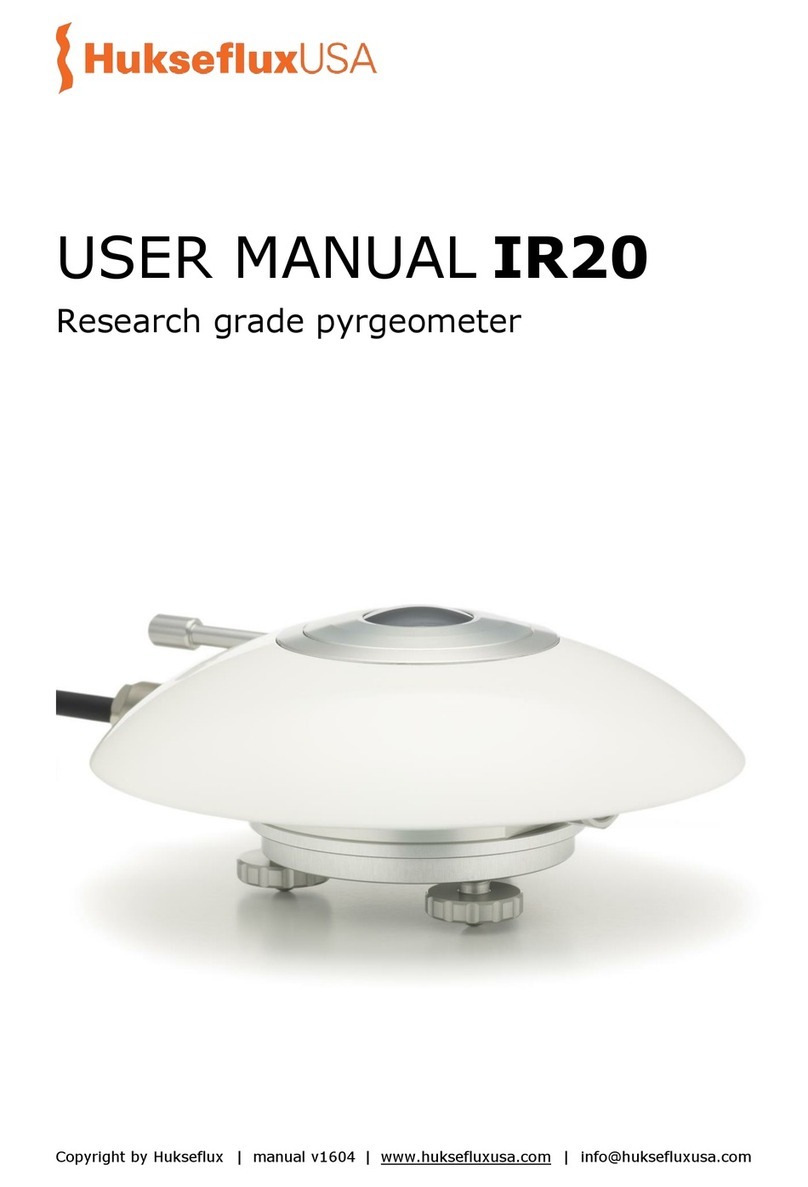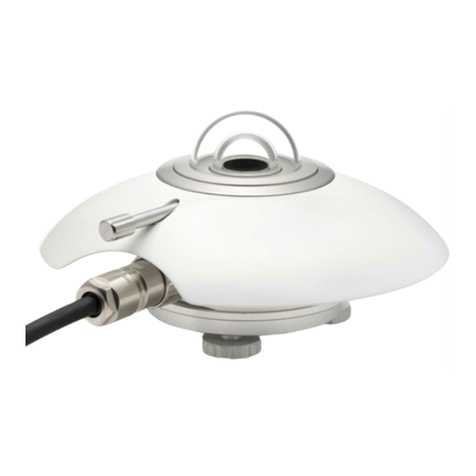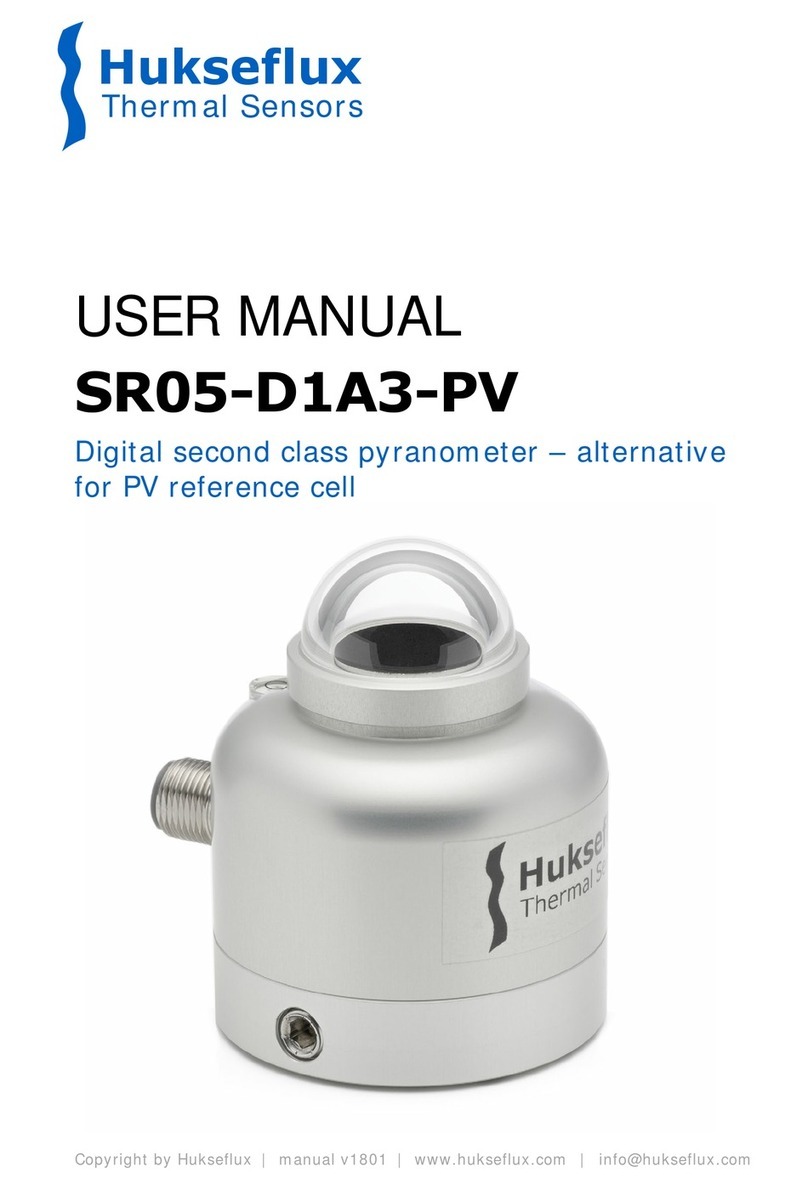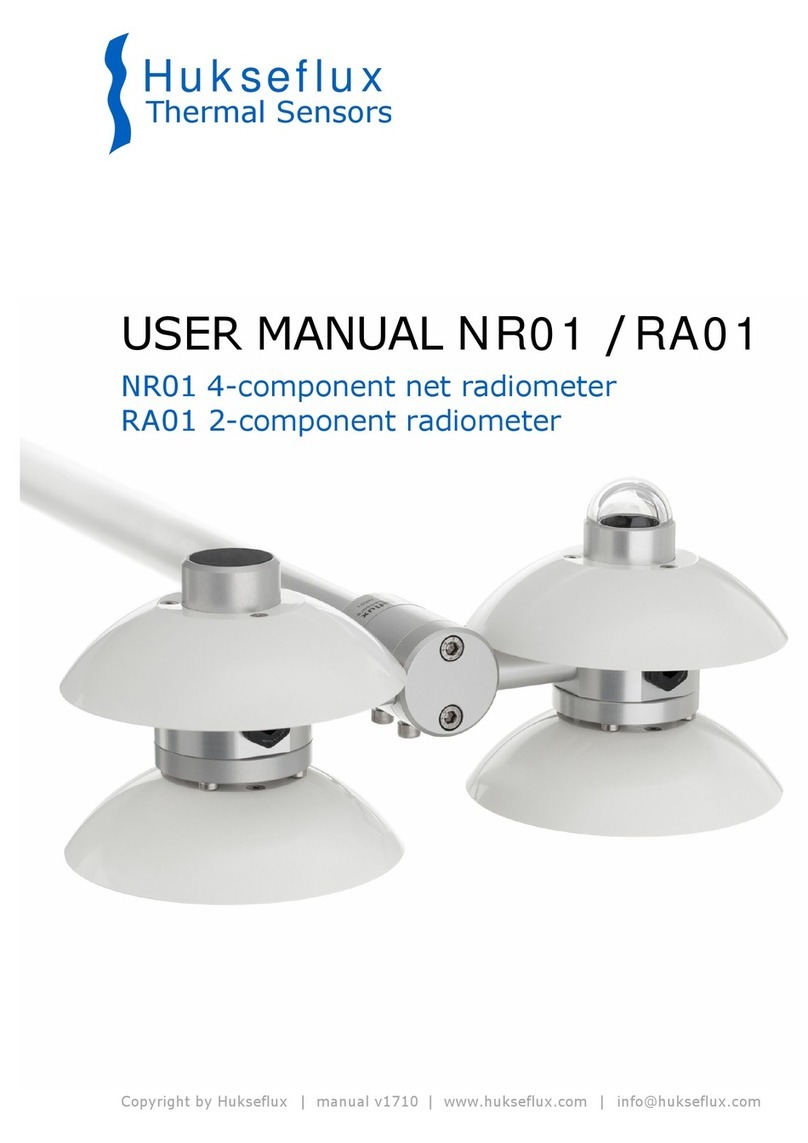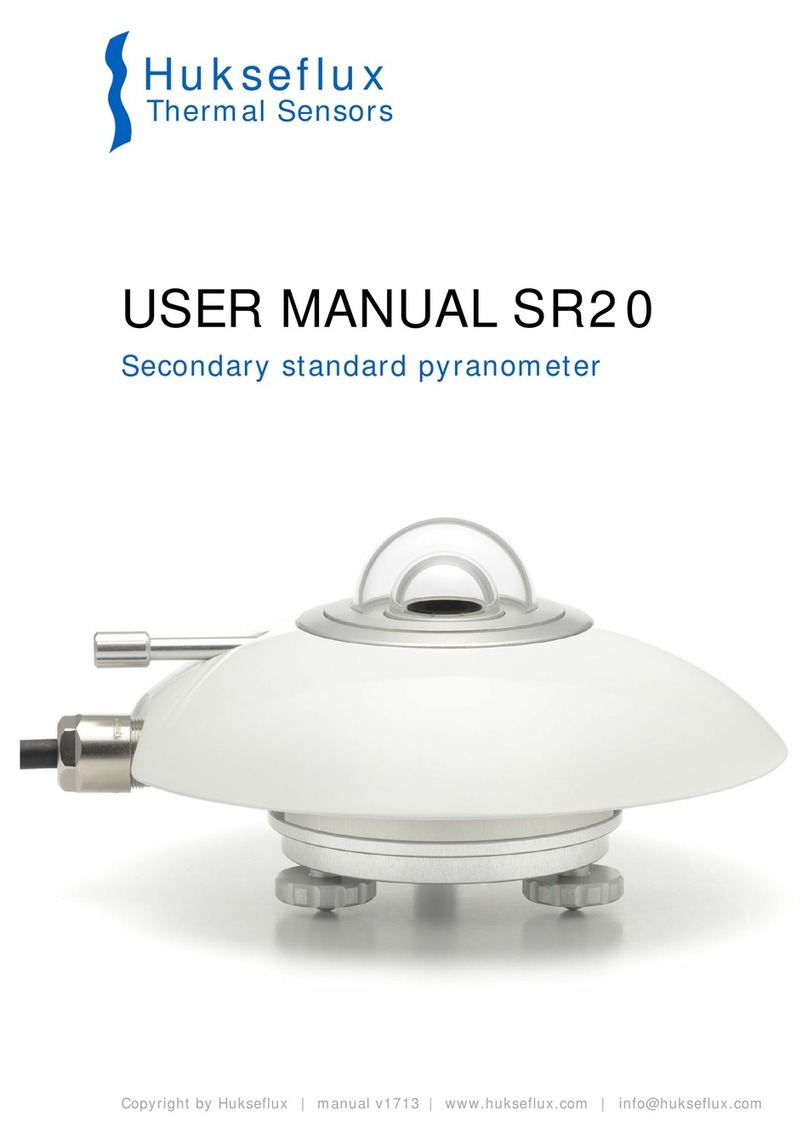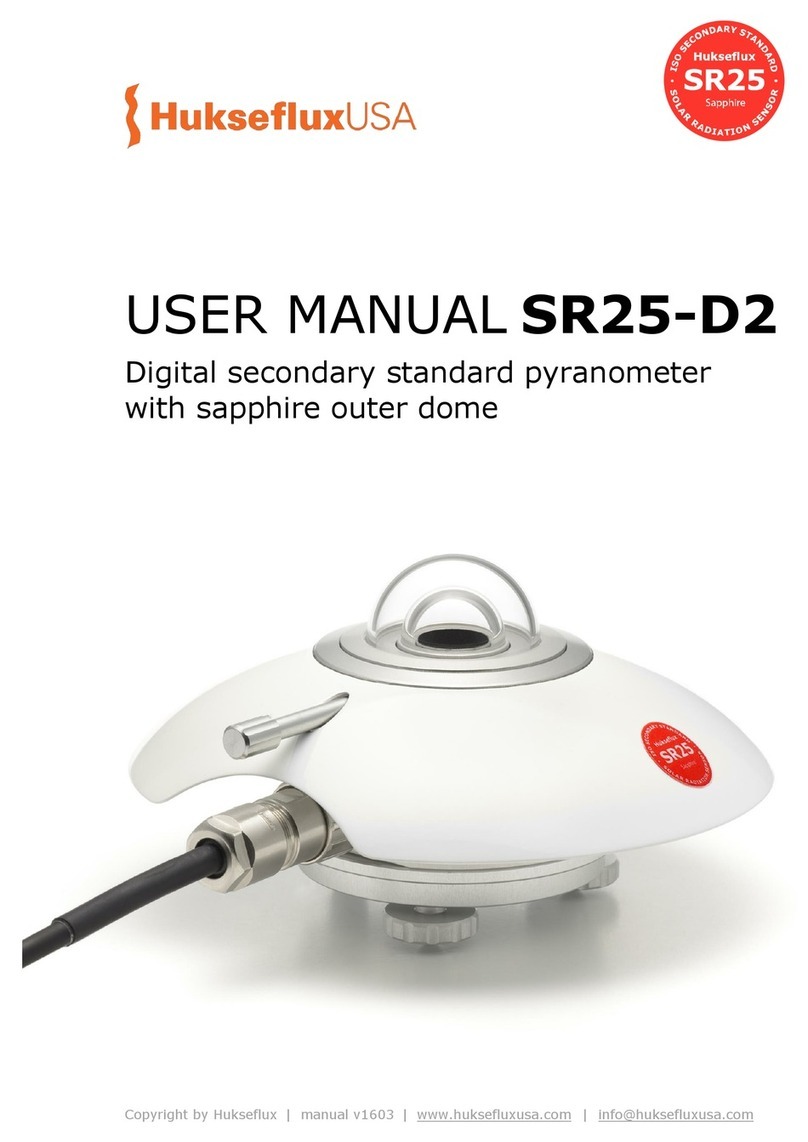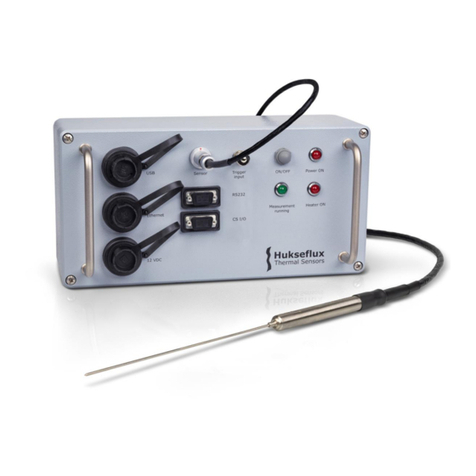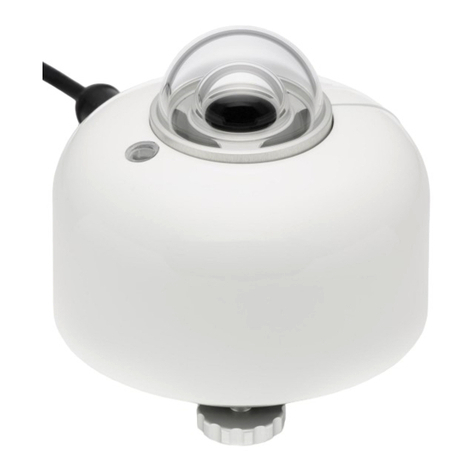DR01 DR02 DR03 manual v1609 10/47
Summarising, DR01 is a radiometer designed to measure DNI (i.e. including some
circumsolar irradiance). It complies with the WMO recommended parameters for the
view-limiting geometry: a full opening angle of 5 °, and a slope angle of 1 °, and
therefore a limit angle of 4 °.
The solar radiation spectrum extends roughly from 285 to 3000 x 10-9 m. By definition a
pyrheliometer should cover that spectral range with a spectral selectivity that is as “flat”
as possible.
For a correct measurement DR01 should be pointed at the sun. It is usually mounted on
a solar tracker. For tracking requirements see the appendix on solar tracking.
In order to attain the proper directional and spectral characteristics, DR01
pyrheliometer’s main components are:
a thermal sensor with black coating. It has a flat spectrum covering the 200 to 4000
x 10-9 m range. The coating absorbs all solar radiation and, at the moment of
absorption, converts it to heat. The heat flows through the sensor to the instrument
body. The thermopile sensor generates a voltage output signal that is proportional to
the solar irradiance.
a quartz glass window. This window limits the spectral range from 200 to 4000 x 10-9
m (cutting off the part above 4000 x 10-9 m)
an aperture tube. The most important components of this tube are two apertures.
One at the detector and the other at the front window. These determine the opening-
and slope angle.
A heater incorporated in the window assembly. This reduces measurement errors
caused by (early-morning) dew deposition. Typically the heater is switched on at
night only. Some users have employed the heater in high-power operation to counter
frost deposition.
Pyrheliometers can be manufactured to different specifications and with different levels
of verification and characterisation during production. The ISO 9060 - 1990 standard,
“Solar energy - specification and classification of instruments for measuring
hemispherical solar and direct solar radiation”, distinguishes between 3 classes;
secondary standard (highest accuracy), first class (second highest accuracy) and second
class (third highest accuracy).
Due to the required spectral selectivity a secondary standard pyrheliometer can only be
made with a cavity-type sensor. In addition the calibration of a secondary standard
pyrheliometer must be done by periodic comparison with a primary standard radiometer.
For this reason commercially available thermopile pyrheliometers with a flat detector and
a window can only be first-class.
From first class to secondary standard, the achievable accuracy improves by a factor 2.
